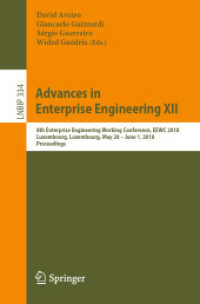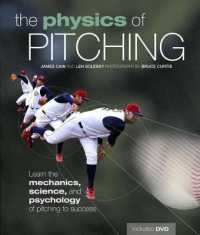- ホーム
- > 洋書
- > 英文書
- > Science / Mathematics
Full Description
Computational Biomechanics for Medicine: Solid and fluid mechanics for the benefit of patients contributions and papers from the MICCAI Computational Biomechanics for Medicine Workshop help in conjunction with Medical Image Computing and Computer Assisted Intervention conference (MICCAI 2020) in Lima, Peru. The content is dedicated to research in the field of methods and applications of computational biomechanics to medical image analysis, image-guided surgery, surgical simulation, surgical intervention planning, disease prognosis and diagnostics, analysis of injury mechanisms, implant and prostheses design, as well as artificial organ design and medical robotics. This book appeals to researchers, students and professionals in the field.
Contents
Part I: Computational Biomechanics Frameworks and Models for Computer-Assisted Therapy and Understanding of Disease Mechanisms.- Chapter 1. Automatic framework for patient-specific biomechanical computations of organ deformation.- Chapter 2. Computer simulation of the resection induced brain shift; Preliminary results.- Chapter 3. Mandibular teeth movement variations in tipping scenario: A finite element study on several patients.- Chapter 4. Computational biomechanics model for analysis of cervical spinal cord deformations under whiplash-type loading.- Part II: Biomechanical tissue characterisation, determining organ geometry, and organ deformation measurements.- Chapter 5. An unsupervised learning based deformable registration network for 4D-CT: Analysis and application.- Chapter 6. 3D reconstruction of patient-specific carotid artery geometry using clinical ultrasound imaging.- Chapter 7. Feasibility of using Freehand Ultrasound imaging to measure anatomical features of the Ischial Tuberosity to improve the prevention of seating-related pressure injury: US-based versus EOS-based assessment.- Chapter 8. Characterising the soft tissue mechanical properties of the lower limb of a below-knee amputee: a review.- Chapter 9. 3D Brain Deformation in cadaveric specimens compared to healthy volunteers under non-injurious loading conditions.








